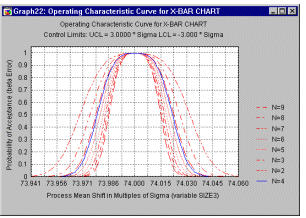

The condition for using this as an estimate is that your sample size n is greater than 30 (given by the central limit theorem) and meets the independence condition n <= 10% of population size. Even a mean from a very small sample of n 5 or 10 has this effect, just by the nature of the mean calculation. What is the probability that S2 will be less than 160 > n 18 > pop. Consider again the pine seedlings, where we had a sample of 18 having a population mean of 30 cm and a population variance of 90 cm2. Since this is just an estimate, its called the Standard Error. Find the mean and standard deviation of the sampling distribution of x bar calculator - This problem is from the following book: calculate a probability. Here we show similar calculations for the distribution of the sampling variance for normal data. With certain inference conditions (our sample is random, normal, independent) we can actually use this standard deviation calculation to estimate the standard deviation of our population.

It should be intuitive that as $n \to p$ (population size), your standard deviation of your sample means will become very small, or in other words the means from each sample will have very little variance (if every sample out of $10\,000$ you sampled the entire population you would get no variance from the population mean).

To sum these values to obtain a sampling distribution, you can use spreadsheet programs such as Microsoft Excel or Google Sheets that have various prepackaged statistical tools for uses like these. This equation provides that with a large enough number of samples, the standard deviation of the sample means can be approximated using this formula: X-Bar Calculator You can find the value of x-bar for any sample quickly by referring to a page like the one in the Resources. I then take the mean of each one of those samples (so my data contains $10\,000$ calculated means). So lets say i take a population and sample it $10\,000$ times with a sample size of $n=2$. you’ll use sample estimates (x-bar, s, etc.) to calculate an estimated sampling distribution. In other words, it's only applicable when you are looking for the standard deviation of means each calculated from a sample of size $n$, taken from a population. A sampling distribution of a statistic is a type of probability distribution created by drawing many random samples of a given size from the same. This formula is used to calculate the standard deviation of a sample distribution of the mean (of a large number of samples from a population). So just wanted to clarify based on my understanding. The answers here don't mention a couple key points.


 0 kommentar(er)
0 kommentar(er)
